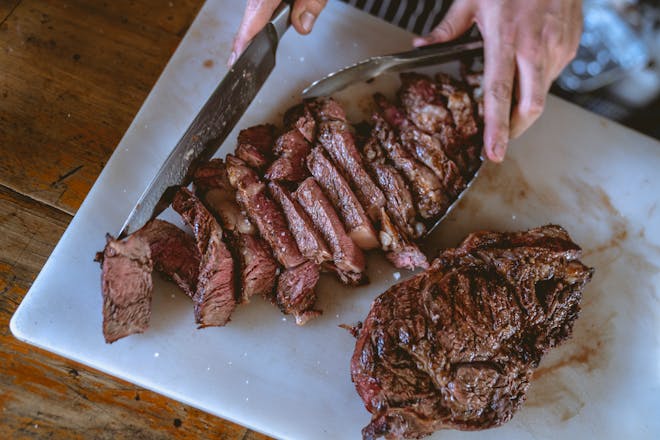Reverse Sear Ribeye Steak: Mastering the Perfect Cook
Understanding the art of reverse sear is key to achieving the perfect ribeye steak. This method flips the traditional searing process on its head, starting with a low-temperature cook and finishing with a high-heat sear. If you’re aiming to impress with your culinary skills, mastering the reverse sear can elevate your ribeye to restaurant-quality greatness.
The Basics of Reverse Sear Ribeye Steak
The reverse sear method starts with slowly cooking the steak at a low temperature, either in the oven or on the cooler side of a grill, until it is almost at your desired level of doneness. Doing so allows the ribeye steak to cook evenly, reducing the risk of overcooking the outer edges while waiting for the center to reach the right temperature. This technique is especially beneficial for thicker cuts of meat that require more precision to cook properly.
Preparing Your Ribeye Steak
Before you begin, let your ribeye steak rest at room temperature for about 30 minutes. This ensures more even cooking. Season generously with salt and your choice of spices, as seasoning will enhance the natural flavors of the meat. Preheat your oven or grill to approximately 275°F (135°C), which is the ideal temperature for the reverse sear method.
Cooking Your Steak to Near-Perfection
Place your seasoned ribeye steak on a wire rack over a baking sheet if using an oven, or on the cooler part of the grill. Insert a meat thermometer into the thickest part of the steak. Cook until the internal temperature is about 10-15 degrees lower than your desired final temperature. For a medium-rare finish, this would be around 120-125°F (49-52°C).
Finishing with a Sear
Once your ribeye steak has reached the target temperature, remove it from the oven or grill and let it rest for a few minutes. Meanwhile, get a skillet screaming hot or prepare the hotter part of the grill for searing. Sear the steak for about 1-2 minutes on each side to develop a rich, caramelized crust. Be vigilant during this step as the high heat can quickly overcook the steak if left unattended.
Resting and Serving Your Reverse Sear Ribeye Steak
Rest your perfectly seared ribeye steak for at least 10 minutes before slicing. This allows the juices to redistribute throughout the meat, ensuring every bite is succulent and full of flavor. Serve with your favorite sides, and enjoy the fruits of your labor.
